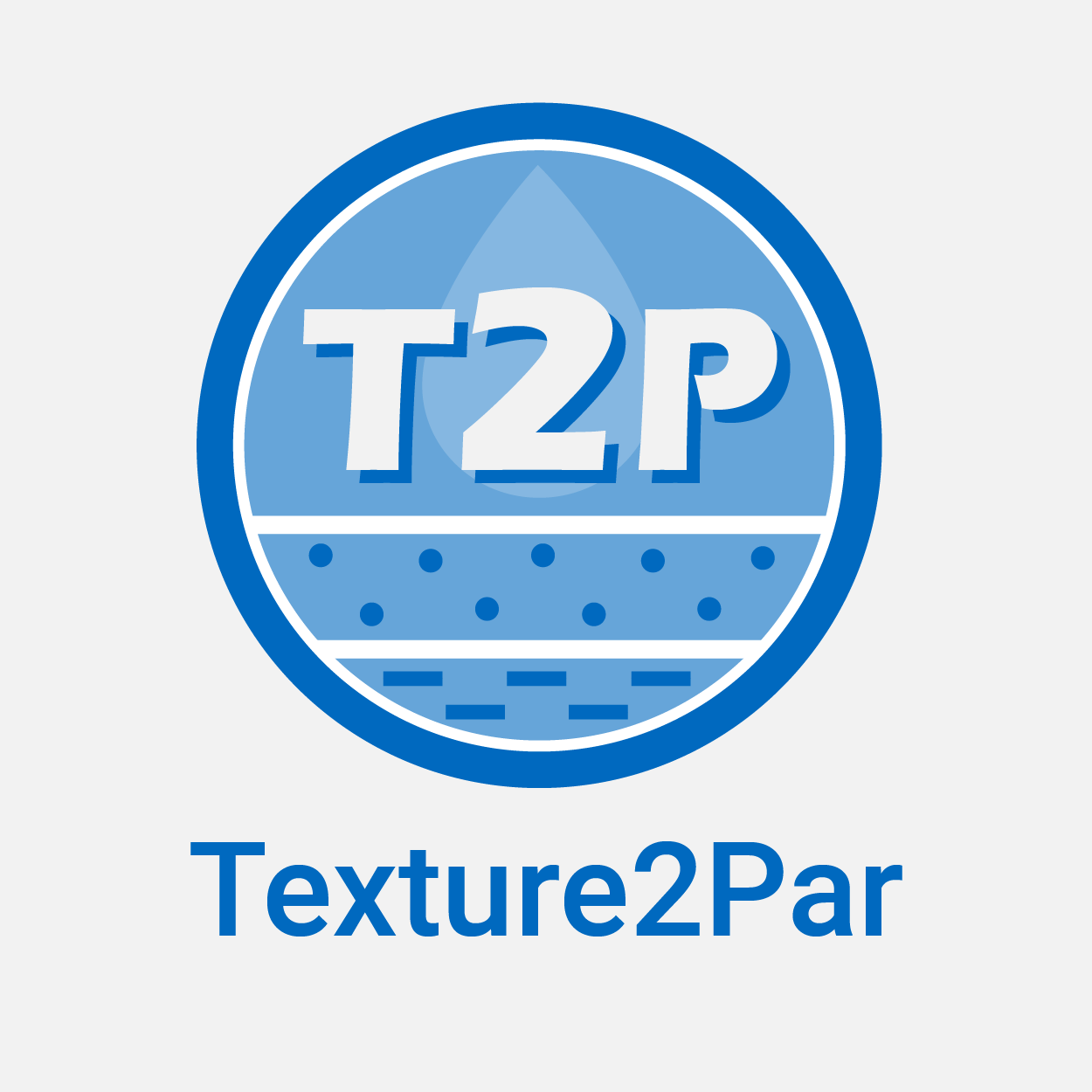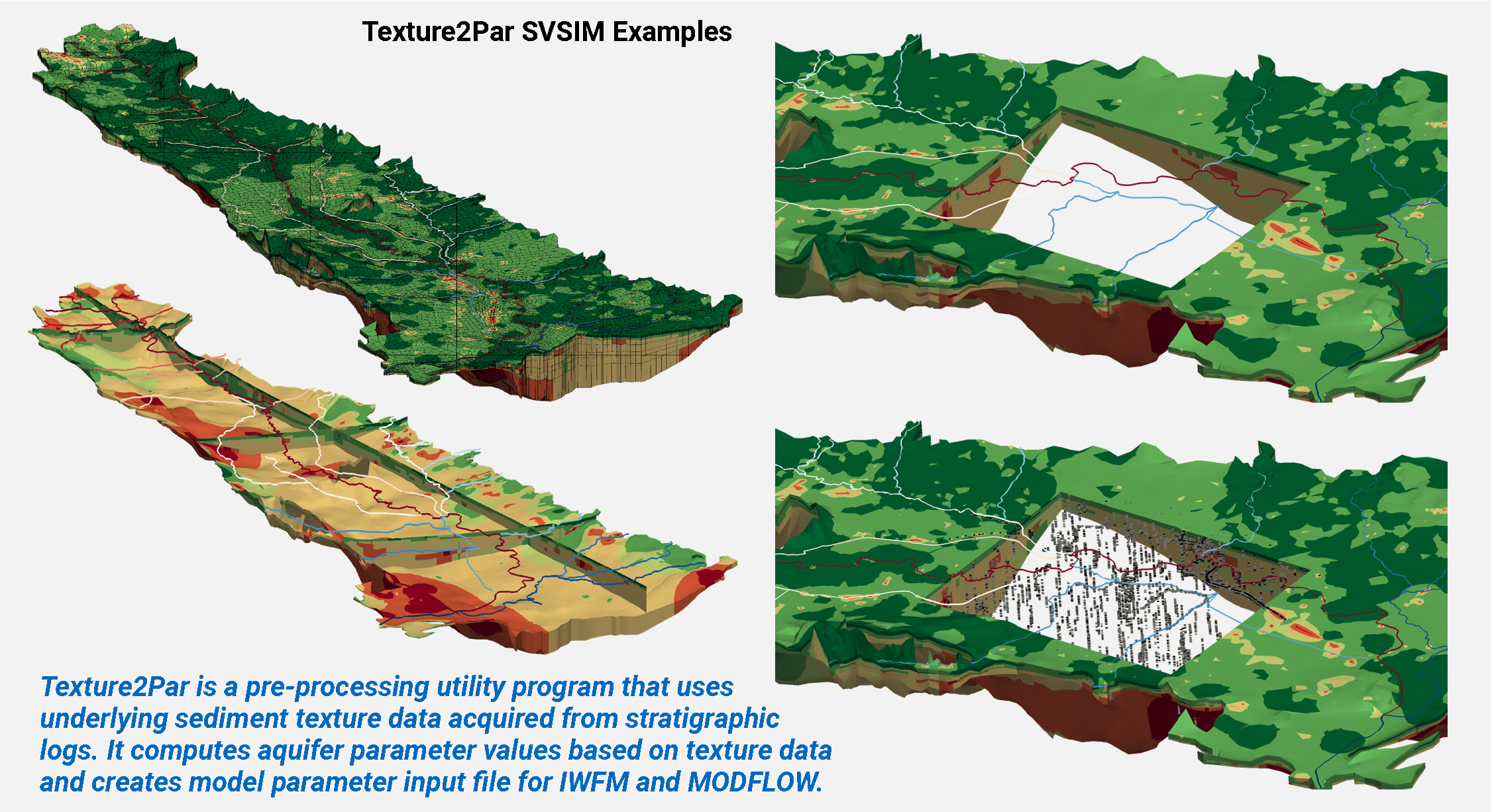Texture2Par – A software program developed to generate spatially distributed parameter inputs for numerical groundwater flow models by constructing a three-dimensional hydrogeological model of the aquifer system based on sediment texture information
The initial version of the Texture2Par program can be used to calculate values for the hydraulic parameters of unconsolidated or loosely consolidated aquifers based on the following three factors: (1) The three-dimensional spatial distribution of data describing the percentage of coarse-grained and fine-grained materials – i.e., texture information – throughout the groundwater system; (2) Estimated hydraulic properties for “end-member” coarse-grained and fine-grained materials; and (3) Empirical parameters that can be used to reflect contrasting textural, depositional, and other hydro-stratigraphical characteristics of the groundwater system as embodied in the conceptual site model (CSM).
The method used by Texture2Par establishes empirical relationships between the texture of unconsolidated and loosely consolidated sediments and bulk aquifer properties to generate values for horizontal and vertical hydraulic conductivity, specific yield, and specific storage throughout the domain of a numerical groundwater flow model.
Texture2Par uses as input sediment texture data obtained, for example, during the drilling of a well or completion of other borings. Variations in the sediment texture express aspects of the heterogeneity within the aquifer. Texture2Par also incorporates a single-parameter depth-decay function that describes the potential for hydraulic conductivity values to decrease with increasing depth below ground surface due to the effects of compaction resulting from overburden stresses.
The model simulation codes that are supported include the Integrated Water Flow Model (IWFM) and MODFLOW. For every model node (IWFM) or model cell (MODFLOW), Texture2Par calculates bulk (effective) aquifer parameters and writes new input files for the corresponding model. While these parameters can immediately be used as an input to numerical models, they can also serve as a good starting point for calibration. Texture2Par was developed in the Fortran programming language and the program can be used as a standalone utility or seamlessly integrated into the modeling workflow as a pre-processor utility to generate input files for a numerical model. The input files needed by Texture2Par are simple ASCII text files that can be integrated with calibration software such as PEST.
Sediment parameter values are likely spatially variable due to distinct regional characteristics and depositional patterns, such as compaction with depth and geologic source material. This variability can be leveraged through the placement of “pilot points” throughout the model domain as part of model calibration within PEST. By interpolating parameter values between the pilot points using kriging, a minimal number of input parameters, i.e., the hydraulic properties of the coarse-grained and fine-grained materials, need to be estimated during calibration and can be used to describe and control the relationships over the entire model domain. Texture2Par provides flexibility to enter different sediment parameters for different pilot points to represent spatial variability. Pilot points can be grouped with specific model nodes/cells to define regional subareas that exhibit similar ranges of aquifer parameter values or alternatively a single pilot point value may be used when spatial variability of texture data is not required.
REFERENCES
Scantlebury, L., V. Bedekar, M. Karanovic, M. J. Tonkin, T. J. Durbin. 2022. Texture2Par User’s Guide: A Parameterization Utility for IWFM and MODFLOW. Version 1.0.0.
Relevant Projects
DISCLAIMER: SP&A’s software is provided “AS IS”, without warranty of any kind, including, without limitation, the warranties of merchantability, fitness for a particular purpose and non-infringement. We request only that application of the software and production of results using the code is accompanied by a suitable acknowledgment. The entire risk and responsibility as to the quality and performance of the Software is borne by the user. SSP&A disclaims all other warranties.



